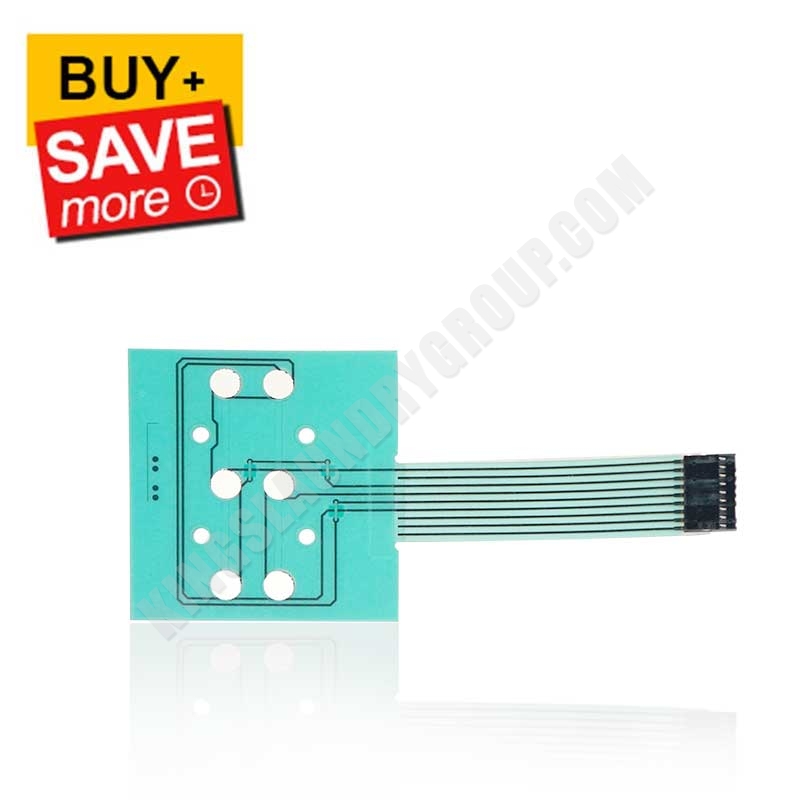Essential Functions to Try To Find When Selecting a Membrane Switch
Essential Functions to Try To Find When Selecting a Membrane Switch
Blog Article
Recognizing the Capability of Membrane Layer Changes for Interface Gadget
The functionality of membrane layer switches stands for a considerable improvement in interface style, incorporating efficiency with aesthetic convenience. These switches run via a multi-layered structure that converts customer interactions right into electrical signals, permitting both portable layouts and durability versus ecological elements. As sectors increasingly focus on user experience, comprehending the nuances of membrane button innovation comes to be necessary. What effects do these developments hold for future applications, and how might they redefine individual interactions across different devices?
What Are Membrane Layer Switches?
Membrane layer buttons are cutting-edge user interface gadgets that help with customer communication with digital equipment. These functional parts contain multiple layers, consisting of a graphic overlay, spacer, and a printed circuit layer. The style enables for a smooth integration right into different digital tools, enhancing both the visual and functional elements of interface.
Membrane switches are commonly used in a large range of applications, from household devices to industrial equipment and clinical tools. Their construction typically includes a slim account, making them an excellent choice for small styles. The tactile comments given by these buttons can be crafted to fulfill certain customer choices, making sure reliable communication in between the user and the tool.
Longevity is one more substantial advantage of membrane buttons, as they are resistant to dust, dampness, and chemicals, which improves their lifespan sought after atmospheres. Additionally, these switches can be personalized in regards to form, size, and visuals layout, enabling branding and user-specific attributes. On the whole, membrane changes stand for a useful solution for boosting individual experience in electronic gadgets, combining capability with aesthetic allure in a reliable way.
How Membrane Layer Changes Work
Operating on a simple concept, membrane switches utilize a split building to sign up customer input efficiently. Each switch contains multiple layers, including a printed circuit layer, a spacer layer, and a leading graphic layer, which are made to collaborate flawlessly. When a customer presses the leading layer, it presses the spacer layer, bringing the conductive elements of the circuit layer right into contact with each other.
This call produces a closed circuit, signaling the device to execute a certain feature. The layout permits for various configurations, including responsive responses, which can enhance the user experience by supplying a physical feeling upon activation. The products made use of in membrane switches frequently consist of adaptable substratums, such as polyester or polycarbonate, which make sure durability and durability against damage.

Trick Benefits of Membrane Switches

An additional considerable advantage is their compactness. Membrane layer switches are slim and light-weight, which makes it possible for manufacturers to conserve area in their gadgets without compromising functionality. This feature is particularly helpful in applications where weight and quantity are Visit This Link crucial considerations.
Additionally, membrane layer buttons are resistant to dust, dampness, and chemicals, boosting their longevity. This durability expands their life expectancy and minimizes the demand for frequent substitutes, leading to cost savings in time.
Furthermore, the tactile feedback supplied by membrane buttons can be enhanced to enhance user communication. They can consist of features such as increased switches or distinct clicks, improving functionality and user experience.
Applications Throughout Industries
Interface devices utilizing membrane buttons are common in a large selection of sectors, showcasing their adaptability and performance. Membrane Switch. In the clinical market, membrane layer switches are essential to devices such as diagnostic equipment and individual monitoring systems, where their durability and ease of cleansing are crucial for keeping hygiene requirements. In the auto sector, these switches are utilized in dashboard controls and infotainment systems, supplying a smooth and modern-day interface for customers.
In addition, the customer electronics sector benefits from membrane layer buttons in appliances and handheld tools, where compact style and user-friendly user interfaces enhance customer experience. Industrial try this out applications also leverage membrane layer switches for control board in equipment and automation systems, stressing their toughness and resistance to severe settings.
In the aerospace and defense markets, membrane switches are utilized in cockpit controls and equipment, where integrity and performance under severe problems are extremely important. Furthermore, the gaming sector progressively incorporates membrane layer switches in controllers and arcade makers, contributing to an appealing customer experience. Generally, the convenience of membrane layer changes enables their widespread usage across various industries, highlighting their importance in modern customer interface design.
Future Fads in Membrane Layer Switch Innovation

In addition, the use of innovative products, such as polycarbonate and polyester films, is anticipated to increase, giving improved sturdiness and resistance to ecological stress factors. These materials add to the general long life of membrane layer switches, making them appropriate for harsher commercial applications.
In addition, the consolidation of wise modern technology, consisting of IoT connection, will allow membrane layer switches to communicate with various other gadgets and systems, facilitating a much more interactive user experience. This trend straightens with the expanding demand for smart tools across different fields, from health care to customer electronics.
Finally, customization choices are anticipated to increase, permitting makers to develop bespoke options tailored to details user demands and preferences. These advancements will position membrane buttons as vital elements in the advancement of customer interface modern technology.
Conclusion
In final thought, membrane changes stand for a crucial improvement in interface innovation, using a reputable and flexible option for varied digital applications. Their split construction assists in compact layout, while features such as tactile comments boost user communication. The longevity against ecological elements even more solidifies their energy across multiple markets. As innovations in product scientific research and touch picking up technologies continue, the performance and applicability of membrane switches are expected to here are the findings broaden, reinforcing their significance in contemporary electronic devices.
Report this page